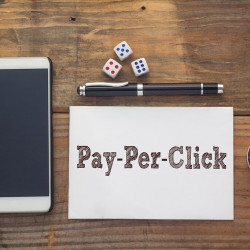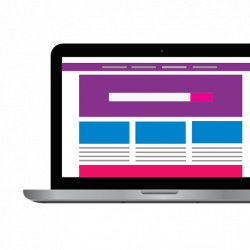When you're working in marketing, you know the importance of using your target audience to find the right people at the right point in their buying journey.
But do you know who your target audience is? And how do you know whether you're targeting them in the right way?
Before diving straight in, let's start with the basics, what is a target audience?
What is a target audience?

Your target audience is the people you most want to target with your marketing. These should be the people most likely to buy your products or services. You can define your target audience by the metrics that are most important to you, for example, age, gender, location and many, many more.
Depending on your target audience, you can tailor your messaging and marketing towards them. For example, if you're selling stag-do adventure packages, you'll likely target men between 20-40 who are recently engaged or getting married soon. It doesn't make sense for you to target women over 70.
The more you know about your target audience, the better you can target them and convert them into customers. For example, if you know your audience reads a certain magazine or is a member of certain groups on Facebook. In that case, you can start advertising in these places and target them further rather than using a catch-all method of what you think will work.
What are the different types of audiences?
Most businesses use more than one target audience depending on the different products or services they are selling or the different points of the customer journey they are trying to gain more customers.
Interest
Separating groups based on their interests can allow you to create highly personalised marketing, which can help drive brand loyalty.
Purchase intent
If you know what your audience is looking to buy and when they're ready to buy, you can target them based on this. Start targeting their pain points and addressing their concerns through your marketing so you can guide them towards making a purchase.
Subcultures
A subculture is a group of people who share a common interest. If you know the subcultures your audience is interested in, you can start to change your marketing to appeal to them further. For example, if your audience is interested in rock music, you can use different messaging compared to an audience interested in Brit Pop.
Do you know the individuals you should be targeting?

There are two different types of people you should target within your target audience, and understanding the difference can help improve how you target them.
1. Decision makers
These are the people with the authority to make the decisions when it comes to buying from you. When targeting individuals, think about the person with the money, the parents or the person organising the lad's night out.
2. The supporters
While these people may not have the final say on what's being bought, they have the ear of the decision-makers. If you're organising activities, think about the spouse, the children or the stags who are going along with the groom. If your activity centre caters to children, take a look at our previous post: Advertising To Parents Only? Have You Considered Focusing On The Kids?
What are the 6 ways to find your target audience?
Now that we've covered why it's important to know who your target audience is, let's take a look at how you can find them.
1. Analyse your current customer base
If you're not sure who to target with your marketing, take a look at who has already bought from you.
If you can spot any trends in your customers, you can likely target the same types of customers again.
2. Try out market research and look towards industry trends
If you don't have the budget to conduct your own market research, try looking online for others who have done it.
If you're having no luck finding market research, look towards your competitors; who are they gearing their marketing towards? Can you find out who they're targeting by their messaging?
3. Create buyer personas
If you already have a rough idea about your target market, see if you can flesh it out more by using buyer personas.
Buyer personas add character to your target audience and allow you to think of them as actual people with wants and needs. For example, "Little Timmy First Time", will have different wants and needs than "Pro Archer Archie".
Your different personas should have different likes and hobbies, read different publications and have different needs when it comes to your marketing.
The more you flesh out these personas, the better you can target them.
4. Define who your target audience isn't
There will be a lot of instances where you end up targeting people who are close to your target audience but who aren't actually in your market.
For example, you could end up targeting people interested in log splitting and creating firewood, rather than those interested in axe throwing. It's close, they both use axes, but you're not quite there and need to refine your target a bit more.
5. Constantly update it
Tastes and trends change, and unless you're keeping up with the interests of your target audience, you might find you keep missing them.
Take the example of running a paintballing centre; once your original clients stop coming because of their age or change in interests, you're going to have to start targeting a younger generation who may have different likes and interests than the original clients.
6. Check Google Analytics
You need to make sure your target audience is visiting your website. If they're not visiting, you need to know who is visiting your site, because you might have miscalculated who your target audience is.
You can also use it to tell which marketing channels your visitors are coming from. For example, if you find they're coming from TikTok or Instagram rather than from Facebook, it might be worth scaling back your marketing efforts on Facebook.





